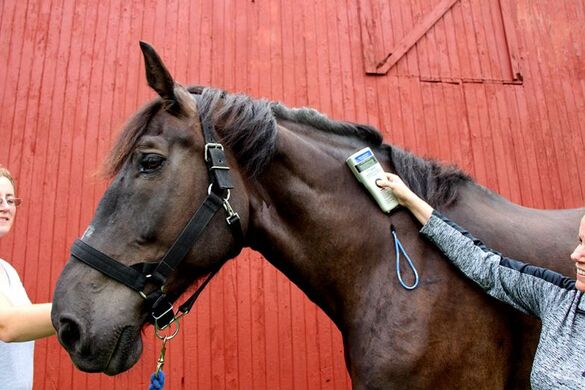FEI/USEF Compliant MicrochippingAs of December 1, 2017 all USHJA registered horses must be microchipped to accumulate points. After a grace period of one year, all horses must have their microchip identification number recorded with the USEF in order to compete at USEF sanctioned shows for the 2019 competition year. It is a humane and tamper-proof method of horse identification and tracking.
The process of inserting the microchip is fairly easy. The site on the neck is clipped and cleaned thoroughly, and a large gauge needle is used to insert the microchip into the nuchal ligament on the left side of the horse’s neck, halfway between the poll and the withers. Inserting a microchip is not an invasive process, and it is very unlikely that a horse would have a reaction. After inserting the chip, we will scan your horse’s neck to make sure it works properly. In order to record the number, the owner is responsible for registering the chip with a recording company. Microchips last forever, so there is no need to repeat this process. |
